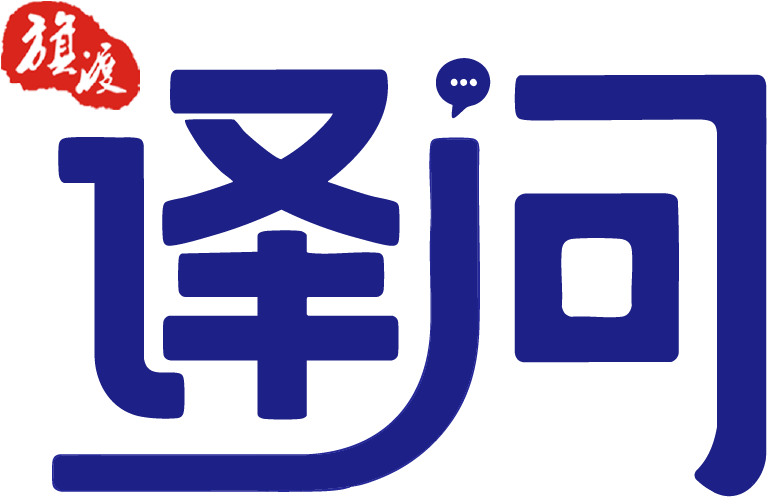
中英双语-企业内部控制应用指引第8号——资产管理(可下载)
Guidelines for the Application of Internal Control in Enterprises No. 8 - Asset Management
企业内部控制应用指引第8号——资产管理
Promulgating Institution: Ministry of Finance; China Securities Regulatory Commission; National Auditing Office; China Banking Regulatory Commission; China Insurance Regulatory Commission
Document Number: Cai Kuai [2010] No. 11
Promulgating Date: 04/15/2010
Effective Date: 04/15/2010
颁布机关: 财政部; 中国证券监督管理委员会; 审计署; 中国银行业监督管理委员会; 中国保险监督管理委员会
文 号: 财会[2010]11号
颁布时间: 04/15/2010
实施时间: 04/15/2010
Chapter 1: General Provisions
第一章 总 则
Article 1 With a view to improving the efficiency of asset utilization, and ensuring the safety of assets, these Guidelines are formulated pursuant to the relevant laws and regulations, as well as theBasic Norms for the Internal Control of Enterprises.
第一条 为了提高资产使用效能,保证资产安全,根据有关法律法规和《企业内部控制基本规范》,制定本指引。
Article 2 For the purpose of these Guidelines, assets shall refer to the inventory, fixed assets and intangible assets under the possession or control of an enterprise.
第二条 本指引所称资产,是指企业拥有或控制的存货、固定资产和无形资产。
Article 3 An enterprise shall, at least, pay attention to the following risks in asset management:
(1) The risks of inventory overstocking or shortage, which may lead to the excessive occupation of working capital, depreciation or impairment of inventory value, or production suspension;
(2) The risks of insufficient efforts of fixed asset renovation, low utilization efficiency, improper maintenance and excessive production capacity, which may result in the lack of competitiveness of the enterprise, the depreciation or impairment of asset value, frequent occurrence of safety accidents or the waste of resources; and
(3) The risks related to intangible assets, including the lack of core technologies, unclear ownership, obsolete technologies and the existence of major technical safety hazards, which may cause the enterprise to get involved in legal disputes or lack the sustainable development capacity.
第三条 企业资产管理至少应当关注下列风险:
(一)存货积压或短缺,可能导致流动资金占用过量、存货价值贬损或生产中断。
(二)固定资产更新改造不够、使用效能低下、维护不当、产能过剩,可能导致企业缺乏竞争力、资产价值贬损、安全事故频发或资源浪费。
(三)无形资产缺乏核心技术、权属不清、技术落后、存在重大技术安全隐患,可能导致企业法律纠纷、缺乏可持续发展能力。
Article 4 An enterprise shall strengthen asset management in all aspects, comprehensively straighten out the asset management process, promptly uncover the weak links in asset management, and take effective measures to make improvement. In addition, the enterprise shall focus on trends of asset impairment, recognize asset impairment loss in a reasonable manner, and continuously improve its asset management capacity.
The enterprise shall attach due importance to, and enhance the insurance of various assets, and determine the insurers by bidding, so as to reduce the risks of asset loss and prevent irregularities in asset insurance.
第四条 企业应当加强各项资产管理,全面梳理资产管理流程,及时发现资产管理中的薄弱环节,切实采取有效措施加以改进,并关注资产减值迹象,合理确认资产减值损失,不断提高企业资产管理水平。
企业应当重视和加强各项资产的投保工作,采用招标等方式确定保险人,降低资产损失风险,防范资产投保舞弊。
Chapter 2: Inventory
第二章 存 货
Article 5 An enterprise shall adopt advanced inventory management technologies and methods, standardize inventory management processes, make clear the management requirements in terms of inventory acquisition, final acceptance and warehouse entry, raw materials processing, warehousing and storage, inventory application and dispatch, stock-taking and disposal, etc., fully utilize the information systems, and reinforce the recording of accounting matters, warehouse entry and exit, and other related information, so as to ensure that the risks of the entire process of inventory management are effectively controlled.
第五条 企业应当采用先进的存货管理技术和方法,规范存货管理流程,明确存货取得、验收入库、原料加工、仓储保管、领用发出、盘点处置等环节的管理要求,充分利用信息系统,强化会计、出入库等相关记录,确保存货管理全过程的风险得到有效控制。
Article 6 An enterprise shall establish the inventory management post accountability system, specify the responsibilities and authority of relevant internal departments and positions, and effectively make sure that incompatible positions are separated from each other, and restrain and supervise each other.
In addition to the internal inventory management department, supervision department and warehousing staff, other departments and personnel of the enterprise shall be specifically authorized by the relevant departments prior to getting access to inventory.
第六条 企业应当建立存货管理岗位责任制,明确内部相关部门和岗位的职责权限,切实做到不相容岗位相互分离、制约和监督。
企业内部除存货管理、监督部门及仓储人员外,其他部门和人员接触存货,应当经过相关部门特别授权。
Article 7 An enterprise shall attach due importance to inventory final acceptance, standardize inventory final acceptance procedures and methods, and inspect the quantity, quality and technical specifications of the inventory to enter the warehouses. Inventory shall enter the warehouses only after final acceptance finds no error.
In the final acceptance of the purchased inventory, the enterprise shall focus on whether the quantity, quality and specifications of the inventory are consistent with those stated in contracts, invoices and other original documentation. Where high-tech goods are involved, the enterprise, if necessary, may entrust agencies with inspection qualifications or external experts to assist in the final acceptance.
In the final acceptance of self-made inventory, the enterprise shall focus on product quality, and shall only allow semi-finished products and finished products passing the inspection to enter warehouses. The enterprise shall promptly identify the reasons behind non-conforming products, hold the parties concerned accountable, and report and properly handle the situation.
In the final acceptance of inventory obtained by other means, the enterprise shall focus on whether the sources, quality and actual value of the inventory are compliant with those agreed upon in relevant contracts or agreements.
第七条 企业应当重视存货验收工作,规范存货验收程序和方法,对入库存货的数量、质量、技术规格等方面进行查验,验收无误方可入库。
外购存货的验收,应当重点关注合同、发票等原始单据与存货的数量、质量、规格等核对一致。涉及技术含量较高的货物,必要时可委托具有检验资质的机构或聘请外部专家协助验收。
自制存货的验收,应当重点关注产品质量,通过检验合格的半成品、产成品才能办理入库手续,不合格品应及时查明原因、落实责任、报告处理。
其他方式取得存货的验收,应当重点关注存货来源、质量状况、实际价值是否符合有关合同或协议的约定。
Article 8 An enterprise shall establish an inventory storage system to check inventory on a regular basis, focusing on the following items:
(1) The enterprise shall perform warehouse entry and exit formalities for the flow of inventory among different warehouses;
(2) The enterprise shall store the materials according to the required storage conditions, and improve the management standards in terms of firefighting, flood prevention, anti-theft, moisture protection, prevention of pests and diseases, and prevention of deterioration;
(3) The enterprise shall strengthen the management of materials, working capital materials and semi-finished products on the production site to prevent waste, theft, and loss;
(4) The enterprise shall separately store and record inventory that it manages or sells on behalf of others, temporarily stores, or processes as entrusted, so as to avoid confusion with the inventory of its own; and
(5) The enterprise shall, in light of its actual situations, enhance the insurance coverage of the inventory to ensure the safety thereof and reduce the risks of accidental loss of the inventory to a reasonable level.
第八条 企业应当建立存货保管制度,定期对存货进行检查,重点关注下列事项:
(一)存货在不同仓库之间流动时应当办理出入库手续。
(二)应当按仓储物资所要求的储存条件贮存,并健全防火、防洪、防盗、防潮、防病虫害和防变质等管理规范。
(三)加强生产现场的材料、周转材料、半成品等物资的管理,防止浪费、被盗和流失。
(四)对代管、代销、暂存、受托加工的存货,应单独存放和记录,避免与本单位存货混淆。
(五)结合企业实际情况,加强存货的保险投保,保证存货安全,合理降低存货意外损失风险。
Article 9 An enterprise shall make clear the examination and approval authority for the dispatch of and application for the inventory, and shall require special authorization in the case of dispatching a large number of stocks, precious goods or dangerous goods. The warehousing department shall dispatch goods in accordance with the examined and approved sales notices (or notices of warehouse exit).
第九条 企业应当明确存货发出和领用的审批权限,大批存货、贵重商品或危险品的发出应当实行特别授权。仓储部门应当根据经审批的销售(出库)通知单发出货物。
Article 10 The warehousing department of an enterprise shall record in detail the entry, exit and storage of inventory, make sure inventory records are consistent with the actual stock, and verify information on a regular basis with the financial and accounting department and the inventory management department.
第十条 企业仓储部门应当详细记录存货入库、出库及库存情况,做到存货记录与实际库存相符,并定期与财会部门、存货管理部门进行核对。
Article 11 An enterprise shall, based on the procurement interval and the current stock level of various inventory, determine the purchase dates and quantity of inventory in a reasonable manner by taking into comprehensive consideration its production and operation plans, market supply and demand and other factors, and by making full use of information systems, so as to ensure that inventory is in the best storage condition.
第十一条 企业应当根据各种存货采购间隔期和当前库存,综合考虑企业生产经营计划、市场供求等因素,充分利用信息系统,合理确定存货采购日期和数量,确保存货处于最佳库存状态。
Article 12 An enterprise shall establish a stock-taking system, determine the stock-taking cycle and process in light of its actual situations, verify the quantity of inventory, and detect signs of inventory impairment in a timely manner. The enterprise shall at least carry out a comprehensive stock-taking at the end of each year, and form a written report for the stock-taking results.
Where it is found in stock-taking that certain inventory is in shortage or overstocking, is damaged or left idle, or needs to be scrapped, the enterprise shall ascertain the reasons behind, hold the parties concerned accountable, and handle the situations after reporting the cases for approval in accordance with the prescribed authority.
第十二条 企业应当建立存货盘点清查制度,结合本企业实际情况确定盘点周期、盘点流程等相关内容,核查存货数量,及时发现存货减值迹象。企业至少应当于每年年度终了开展全面盘点清查,盘点清查结果应当形成书面报告。
盘点清查中发现的存货盘盈、盘亏、毁损、闲置以及需要报废的存货,应当查明原因、落实并追究责任,按照规定权限批准后处置。
Chapter 3: Fixed Assets
第三章 固定资产
Article 13 An enterprise shall strengthen the management of buildings, construction structures, machinery, equipment and other fixed assets, attach due importance to the maintenance, upgrading and renovation of fixed assets, constantly improve the utilization efficiency of fixed assets, and actively make sure that the fixed assets are in good operating conditions.
第十三条 企业应当加强房屋建筑物、机器设备等各类固定资产的管理,重视固定资产维护和更新改造,不断提升固定资产的使用效能,积极促进固定资产处于良好运行状态。
Article 14 An enterprise shall prepare the catalogue of fixed assets, assign numbers to each fixed asset, and set up a fixed asset card for each asset to record in detail the source of the fixed asset, its final acceptance, the location of use, the entity and the personnel responsible, operation, maintenance, renovation, depreciation, stock-taking and other related contents.
The enterprise shall strictly carry out the routine maintenance and overhaul plan of fixed assets, and conduct regular maintenance of fixed assets, to effectively eliminate safety hazards.
The enterprise shall reinforce the monitoring of the operation of production lines and other key equipment, enforce operational procedures, and adopt the pre-job training and post licensing system to ensure the safe operation of equipment.
第十四条 企业应当制定固定资产目录,对每项固定资产进行编号,按照单项资产建立固定资产卡片,详细记录各项固定资产的来源、验收、使用地点、责任单位和责任人、运转、维修、改造、折旧、盘点等相关内容。
企业应当严格执行固定资产日常维修和大修理计划,定期对固定资产进行维护保养,切实消除安全隐患。
企业应当强化对生产线等关键设备运转的监控,严格操作流程,实行岗前培训和岗位许可制度,确保设备安全运转。
Article 15 An enterprise shall, in accordance with its development strategies, take full advantage of State policies on independent innovation, increase input in technological transformation, continuously promote the technological upgrading of fixed assets, and eliminate outdated equipment, so as to effectively maintain the advanced technologies of the fixed assets of the enterprise and the sustainable development of the enterprise.
第十五条 企业应当根据发展战略,充分利用国家有关自主创新政策,加大技改投入,不断促进固定资产技术升级,淘汰落后设备,切实做到保持本企业固定资产技术的先进性和企业发展的可持续性。
Article 16 An enterprise shall strictly enforce the policy of insuring fixed assets, conduct examination and approval for fixed assets that shall be insured according to the prescribed procedures, and apply for insurance coverage in a timely manner.
第十六条 企业应当严格执行固定资产投保政策,对应投保的固定资产项目按规定程序进行审批,及时办理投保手续。
Article 17 An enterprise shall standardize the management of mortgage of fixed assets, and specify the procedures for mortgage of fixed assets and the examination and approval authority.
The enterprise shall apply to the relevant internal department if it intends to mortgage its fixed assets. The asset management department shall handle the mortgage formalities only after the application is approved by the relevant department or person authorized by the enterprise.
The enterprise shall strengthen the management of assets it has received as a mortgagee by preparing a special asset catalogue and making a reasonable valuation of such assets.
第十七条 企业应当规范固定资产抵押管理,确定固定资产抵押程序和审批权限等。
企业将固定资产用作抵押的,应由相关部门提出申请,经企业授权部门或人员批准后,由资产管理部门办理抵押手续。
企业应当加强对接收的抵押资产的管理,编制专门的资产目录,合理评估抵押资产的价值。
Article 18 An enterprise shall establish a fixed asset checking system to conduct at least one comprehensive checking annually. The enterprise shall find out the reasons behind the issues uncovered in the checking of fixed assets, hold relevant persons accountable, and properly address the issues.
The enterprise shall strengthen the control over the disposal of fixed assets, and pay attention to associated-party transactions and pricing in such disposal to prevent losses of assets.
第十八条 企业应当建立固定资产清查制度,至少每年进行全面清查。对固定资产清查中发现的问题,应当查明原因,追究责任,妥善处理。
企业应当加强固定资产处置的控制,关注固定资产处置中的关联交易和处置定价,防范资产流失。
Chapter 4: Intangible Assets
第四章 无形资产
Article 19 An enterprise shall strengthen the management of its brands, trademarks, patents, proprietary technologies, the land-use right and other intangible assets, formulate different management measures for intangible assets according to different types thereof, and enforce the intangible asset management accountability system, so as to promote the effective utilization of intangible assets, and fully leverage the role of intangible assets in enhancing the core competitiveness of the enterprise.
第十九条 企业应当加强对品牌、商标、专利、专有技术、土地使用权等无形资产的管理,分类制定无形资产管理办法,落实无形资产管理责任制,促进无形资产有效利用,充分发挥无形资产对提升企业核心竞争力的作用。
Article 20 An enterprise shall thoroughly straighten out the ownership of intangible assets purchased, independently developed, and acquired by other means, and strengthen the protection of the rights and interests of intangible assets, and prevent infringements and legal risks. Where the intangible assets are of a confidential nature, the enterprise shall take rigorous confidentiality measures to prevent the divulgence of trade secrets.
Where the enterprise obtains the land-use right by purchase or by paying for the land transfer fee, it shall also obtain valid documents proving its land-use right.
第二十条 企业应当全面梳理外购、自行开发以及其他方式取得的各类无形资产的权属关系,加强无形资产权益保护,防范侵权行为和法律风险。无形资产具有保密性质的,应当采取严格保密措施,严防泄露商业秘密。
企业购入或者以支付土地出让金等方式取得的土地使用权,应当取得土地使用权有效证明文件。
Article 21 An enterprise shall, on a regular basis, assess whether its patents, proprietary technologies and other intangible assets are advanced enough, eliminate outdated technologies, increase investment in research and development, promote technological upgrading, and constantly enhance its independent innovation capability, so as to make its core technologies at the industry advanced level.
第二十一条 企业应当定期对专利、专有技术等无形资产的先进性进行评估,淘汰落后技术,加大研发投入,促进技术更新换代,不断提升自主创新能力,努力做到核心技术处于同行业领先水平。
Article 22 An enterprise shall attach due importance to brand building, strengthen the management of its goodwill, constantly build up and nurture brands for its core business by providing high quality products and services and by other means, and effectively maintain and enhance the social recognition of its brands.
第二十二条 企业应当重视品牌建设,加强商誉管理,通过提供高质量产品和优质服务等多种方式,不断打造和培育主业品牌,切实维护和提升企业品牌的社会认可度。
附件:

